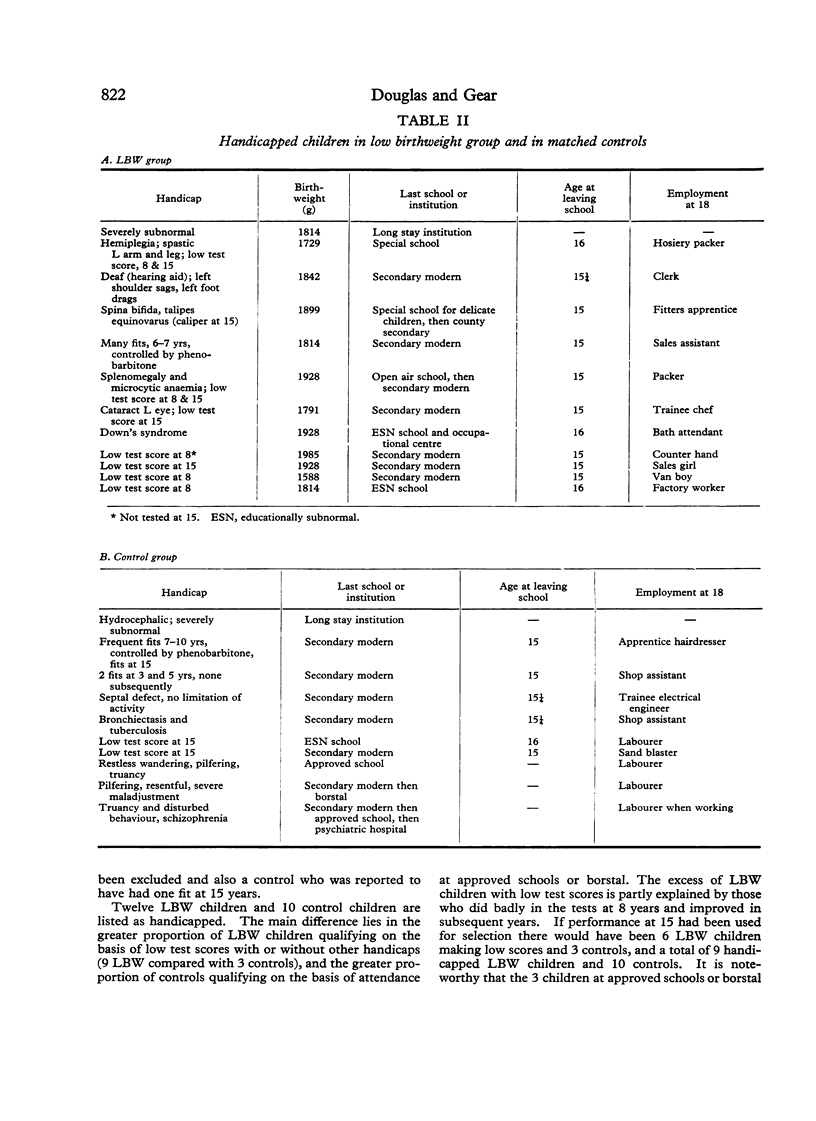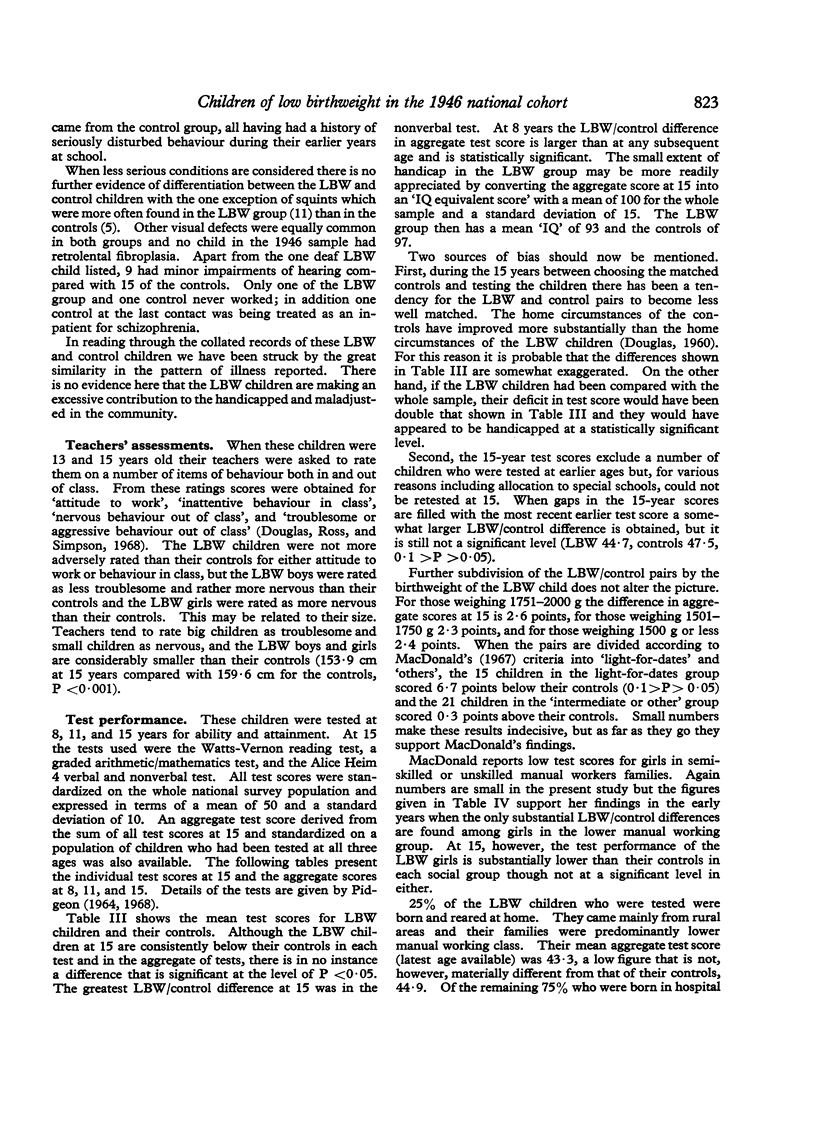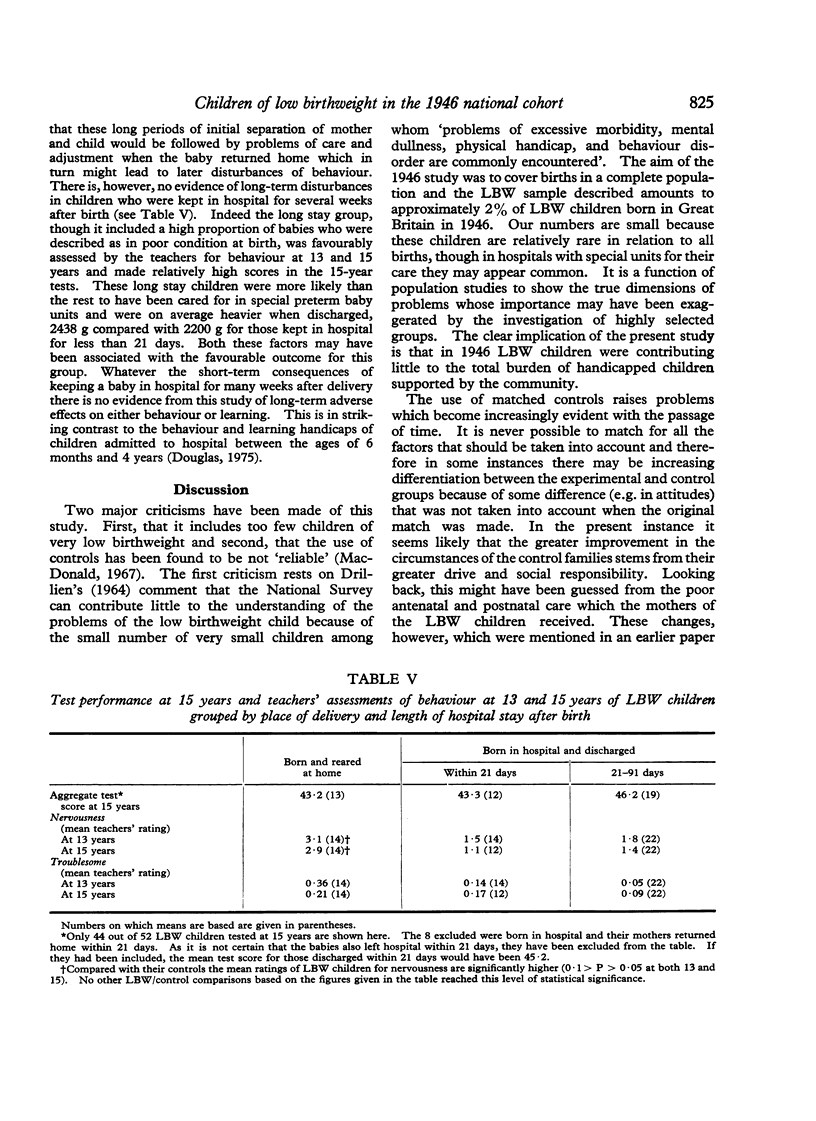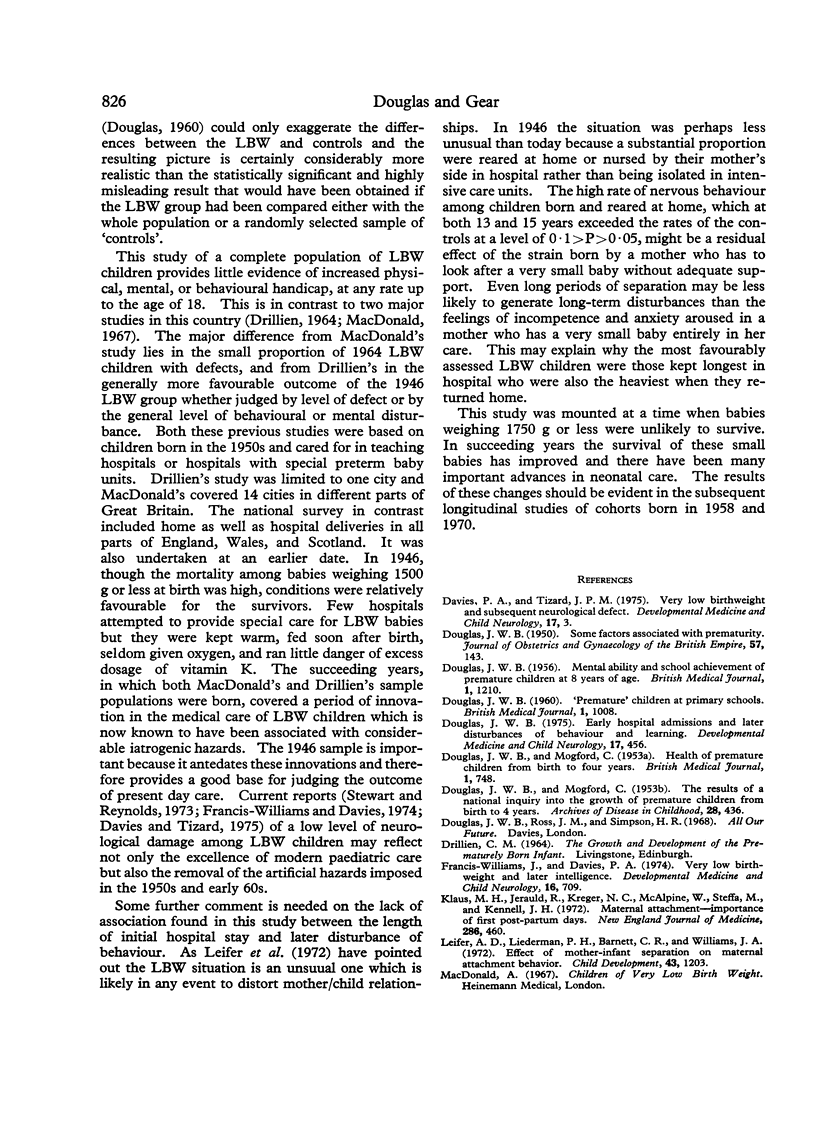Abstract
Among 12 468 legitimate single births in the first week of March 1946, 163 weighed 200 g or less (LBW group) and of these 80 survived to 18 years. 6 of the LBW survivors emigrated with their families and 5 have not been traced since birth. The remaining 69 were followed up to the age of 15 at which time two early school leavers were lost to the study. There is evidence that none of the survivors who emigrated or left the sample and serious physical or mental impairment. Compared with individually matched controls, the LBW children showed similar proportions with severe physical, mental, or behavioural handicaps. There are small and statistically nonsignificant differences in favour of the controls in ability and attainment scores at 15 years and in the level of academic qualifications gained by the age of 18. If the mean ability and attainment scores are expressed as an "intelligence quotient" with a mean of 100 and a standard deviation of 15, the LBW group has an average IQ of 93 and the controls of 97. Hospital stay after childbirth was much longer in 1946 than today and many LBW children spent more than 3 weeks in hospital. There is no evidence that long hospital stay was associated with problems of behaviour or learning in adolescence.
Full text
PDF







Selected References
These references are in PubMed. This may not be the complete list of references from this article.
- DOUGLAS J. W. B., MOGFORD C. Health of premature children from birth to four years. Br Med J. 1953 Apr 4;1(4813):748–754. doi: 10.1136/bmj.1.4813.748. [DOI] [PMC free article] [PubMed] [Google Scholar]
- DOUGLAS J. W. "Premature" children at primary schools. Br Med J. 1960 Apr 2;1(5178):1008–1013. doi: 10.1136/bmj.1.5178.1008. [DOI] [PMC free article] [PubMed] [Google Scholar]
- DOUGLAS J. W., MOGFORD C. The results of a national inquiry into the growth of premature children from birth to 4 years. Arch Dis Child. 1953 Dec;28(142):436–445. doi: 10.1136/adc.28.142.436. [DOI] [PMC free article] [PubMed] [Google Scholar]
- DOUGLAS J. W. Mental ability and school achievement of premature children at 8 years of age. Br Med J. 1956 May 26;1(4977):1210–1214. doi: 10.1136/bmj.1.4977.1210. [DOI] [PMC free article] [PubMed] [Google Scholar]
- Davies P. A., Tizard J. P. Very low birthweight and subsequent neurological defect (with special reference to spastic diplegia). Dev Med Child Neurol. 1975 Feb;17(1):3–17. doi: 10.1111/j.1469-8749.1975.tb04951.x. [DOI] [PubMed] [Google Scholar]
- Douglas J. W. Early hospital admissions and later disturbances of behaviour and learning. Dev Med Child Neurol. 1975 Aug;17(4):456–480. doi: 10.1111/j.1469-8749.1975.tb03497.x. [DOI] [PubMed] [Google Scholar]
- Francis-Williams J., Davies P. A. Very low birthweight and later intelligence. Dev Med Child Neurol. 1974 Dec;16(6):709–728. doi: 10.1111/j.1469-8749.1974.tb03392.x. [DOI] [PubMed] [Google Scholar]
- Klaus M. H., Jerauld R., Kreger N. C., McAlpine W., Steffa M., Kennel J. H. Maternal attachment. Importance of the first post-partum days. N Engl J Med. 1972 Mar 2;286(9):460–463. doi: 10.1056/NEJM197203022860904. [DOI] [PubMed] [Google Scholar]
- Leifer A. D., Leiderman P. H., Barnett C. R., Williams J. A. Effects of mother-infant separation on maternal attachment behavior. Child Dev. 1972 Dec;43(4):1203–1218. [PubMed] [Google Scholar]
- Stewart A. L., Reynolds E. O. Improved prognosis for infants of very low birthweight. Pediatrics. 1974 Dec;54(6):724–735. [PubMed] [Google Scholar]


